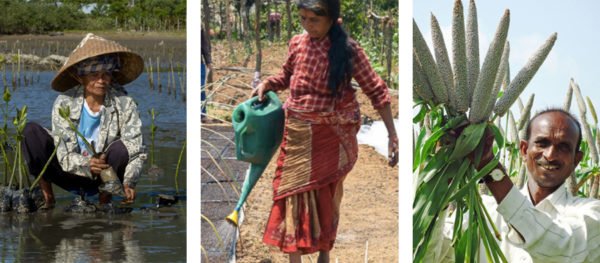Tag: IFA

Chegou a Hora Para a Segunda Revolução Verde no Brasil
Latin America & the Caribbean: New innovations can help bring about a second green revolution, says executive director of Brazil's national fertilizer association.
Read MoreIt Is Time for Brazil’s Second Green Revolution
Latin America & the Caribbean: New innovations can help bring about a "Second Green Revolution" in Brazil, explains the executive director of Brazil's national fertilizer association, ANDA.
Read More10 Ways Agriculture is Improving Lives in Asia
Asia: We take a trip to Asia to learn about the innovative projects Farming First supporters are working on all over the continent to improve food security and farmers’ lives.
Read MoreIFA Vice-President Mr. Abdulrahman Jawahery on the Post-2015 Sustainable Development Goals
Africa & Middle East: This blog post was written by Mr. Abdulrahman A. Hussain Jawahery President of the Gulf Petrochemical Industries Co (GPIC) and Vice-President for Sustainable Development for the International Fertilizer Industry Association (IFA). In the aftermath of Rio+20, and bearing the legacy of the Millennium Development Goals, the Sustainable Development Goals aim to generate a multidimensional approach […]
Read MoreReflections on the G8: Taking the Initiative on Commitments to Tackle Nutrition
Global: Over the last few weeks, Farming First has been following G8 discussions, providing updates across our blog and Twitter feed. The landmark “Hunger Summit” saw world leaders pledge $4bn to combat child malnutrition. This pledge was one of – if not the – greatest achievements of this year’s G8 summit, whose legacy has been to firmly place […]
Read MoreFilipino Farmers Given Fertilizer Advice Via Text Message
Asia: Rice farmers in the Philippines are being given advice on best fertilizer use through a new text message programme. The scheme, thought to be a worldwide first, has been launched by the International Rice Research Institute (IRRI) where scientists have spent 18 years refining a computerized system to advise farmers on optimal fertilizer use via […]
Read MoreSelenium Fortified Fertilizers in Finland
Europe: Selenium is an essential micronutrient to sustain human and animal health. However it is one of the most common micronutrient deficiencies in malnutrition. Low levels of selenium (Se) have been associated with a higher risk of cardiovascular diseases and cancer in humans Selenium is mainly provided by plant foods (such as cereal), meat and dairy products. […]
Read More



